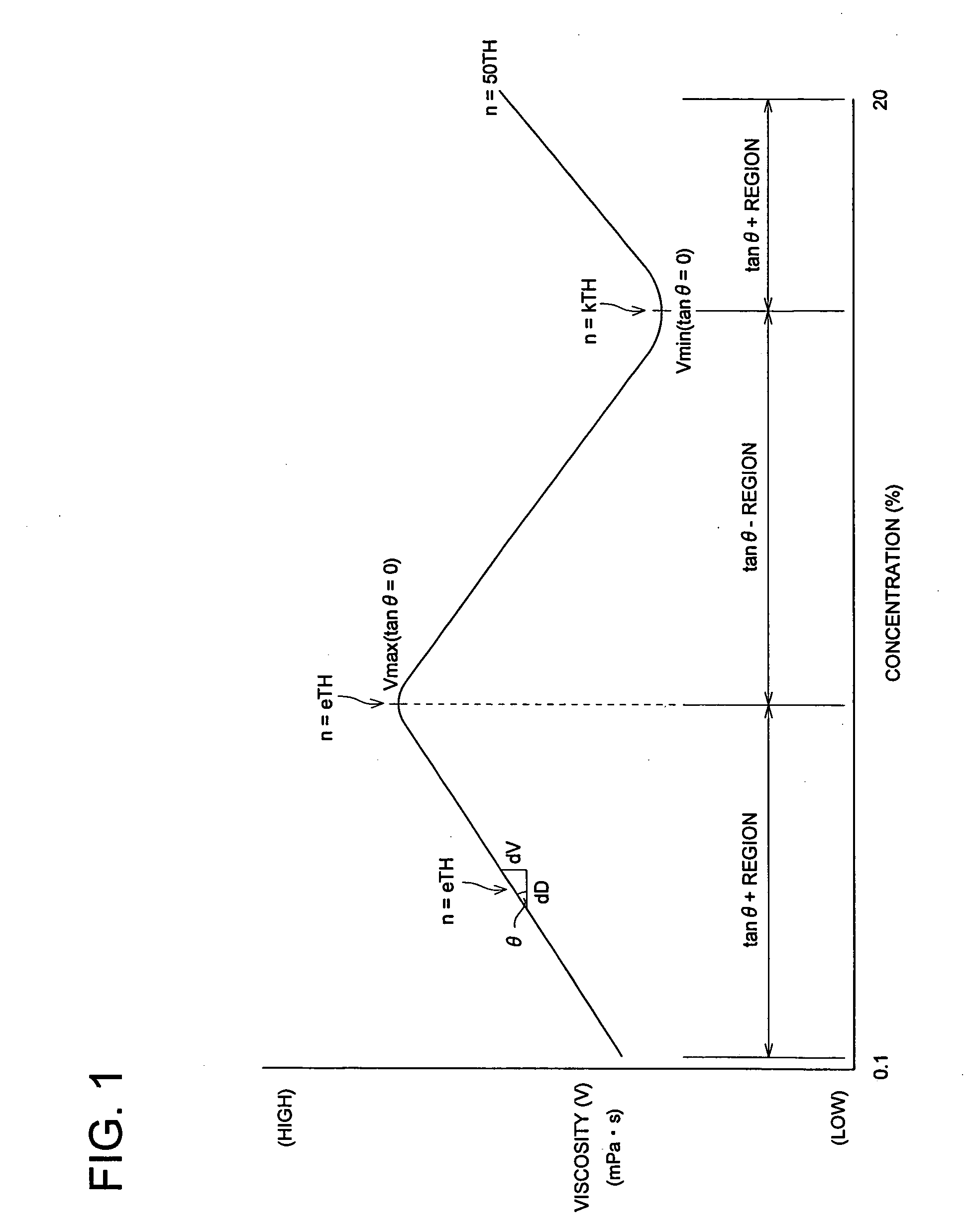Ink-jet ink and recording method using the same
a technology of inkjet ink and recording method, which is applied in the field of inkjet ink, can solve the problems of difficult to use ink, large amount of volatile solvents are harmful to operators, and the cost of recording media is relatively high
- Summary
- Abstract
- Description
- Claims
- Application Information
AI Technical Summary
Problems solved by technology
Method used
Image
Examples
example 1
>
(Preparation of Viscosity Retarding Material 1)
[0083] Monomer Liquid Composition 1 was prepared by blending 14 parts of styrene, 6 parts of butyl acrylate, 10 parts of 2-hydroethyl acrylate, and 0.5 part of ethylene glycol dimethacrylate.
[0084] Charged into a four-necked flask were 0.2 part of dodecyl sulfate and 180 parts of ion-exchanged water. After dissolution, air in the flask was replaced with nitrogen. Added into the resulting solution were 5 parts of Monomer Liquid Composition 1, and the resulting mixture was heated to 60° C. while stirring. After the temperatures rise, 3 parts of 2% aqueous ammonium persulfate solution were dripped and thereafter, the resulting mixture was heated to 80° C. and residual Monomer Liquids Composition 1 (25.5 parts) and 40 parts of a 2% aqueous ammonium persulfate solution were dripped over three hours. The resulting mixture was then subjected to ripening for two hours, whereby a core portion was prepared.
[0085] While maintaining the above ...
example 2
[0137] Each of Black Inks 3 and 20 prepared in Example 1 was ejected onto an art paper (TOKUBISHI ART at a base weight of 127.9 g / m2, produced by. Mitsubishi Paper Mills Ltd.) at an ejection amount per droplet listed in Table 2, employing INK JET PRINTER PXG-900, produced by Seiko Epson Corp. or an ink-jet printer fitted with electrostatic suction type ink-jet recording heads described in JP-A No. 2004-136656, and line images as well as solid images were printed, and ejection stability, abrasion resistance and image smoothness were evaluated employing the same methods as those described in Example 1.
TABLE 2Viscosity RetardingFine polymerMaterial / AmphiphileparticlesDropletAverageAverageVolumeParticleAddedParticleAddedduringEjection StabilityImageImageInkDiameteramountDiameteramountEjection40° C.,20° C.,AbrasionSmooth-Re-No.No.Type(nm)(parts)Type(nm)(parts)(pl)30% RH70% RHResistancenessmarks23311481.0A10510.00.2AAAAInv.24211481.0A10510.00.5AAAAInv.25311481.0A10510.01.0AAAAInv.263114...
PUM
| Property | Measurement | Unit |
|---|---|---|
| Temperature | aaaaa | aaaaa |
| Percent by mass | aaaaa | aaaaa |
| Percent by mass | aaaaa | aaaaa |
Abstract
Description
Claims
Application Information
 Login to View More
Login to View More - R&D
- Intellectual Property
- Life Sciences
- Materials
- Tech Scout
- Unparalleled Data Quality
- Higher Quality Content
- 60% Fewer Hallucinations
Browse by: Latest US Patents, China's latest patents, Technical Efficacy Thesaurus, Application Domain, Technology Topic, Popular Technical Reports.
© 2025 PatSnap. All rights reserved.Legal|Privacy policy|Modern Slavery Act Transparency Statement|Sitemap|About US| Contact US: help@patsnap.com

